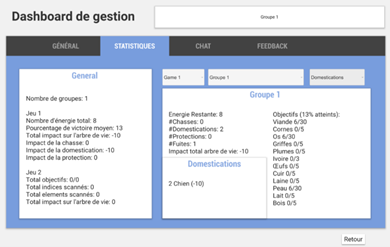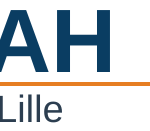
Bien qu’elle soit cruciale, la question de l’orchestration du jeu est peu abordée par la recherche. Par orchestration il faut entendre l’introduction et l’aniation du jeu. Cette orchestration passe par un suivi du joueur rendu possible par le recueil d’informations sur son activité. Ces traces sont qualifiées de traces d’interactions. Elles peuvent être visualisées à l’aide de tableaux de bord.
L’article qui a été publié cette semaine aborde cette question travaillée dans le cadre des projets DigitComp et PLAY. Il décrit ce que nous appelons un compagnon digital qui permet de médier les interaction entre joueurs et maître du jeu.
Bonnat, C., & Sanchez, E. (2022). Toward a digital companion to monitor a mixed reality game. International Journal of Serious Games., 9(3). https://doi.org/http://dx.doi.org/10.17083/ijsg.v9i3.504
Abstract
The game orchestration by the game master during a game-based learning session requires to (1) collect data from player interactions, (2) visualize indicators built with this data, (3) take decisions regarding the monitoring of the activity and (4) interact with players. The complexity of this monitoring increases with mixed-reality games due to the multiplicity of possible interactions with tangible and digital game elements. This article deals with playing analytics and the design of a digital companion to help a game master to orchestrate Geome, a mixed-reality game dedicated to museum school visits. The prototype is the result of a co-design process between researchers, practitioners, and computer scientists. This work allowed us to (1) define the interactions established during the use of the game that should be traced for the game master and (2) test the prototype with 3 classes (12-15 years old). We found that, while the players play the game as intended using most of the features, the game master makes little use of his dashboard and doesn’t interact with players through the dedicated interface. [poursuivre la lecture]



